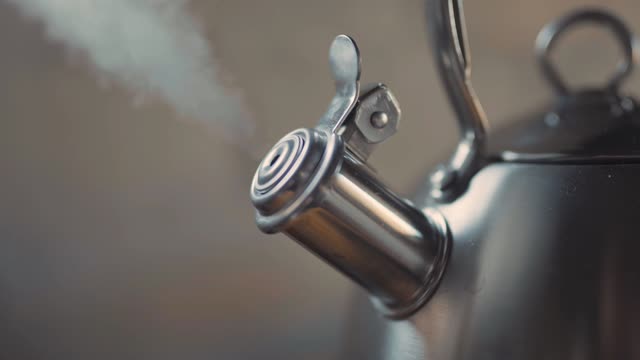Premium Only Content

Tea-kittle-whistle-sound
mechanism which gives you a tone when you blow over an empty bottle.”
When air is blown over the open neck of a bottle, the Helmholtz resonator mechanism causes sound to radiate from the neck. The air just inside the neck is bouncing up and down – the air in the main body of the bottle being compressed and released each time like a spring.
For the kettle, the spring is the air inside the whistle, while the air within the whistle opening reverberates like the air in the neck of a bottle. “In a kettle, of course, the air is blown through, rather than over, the neck – the effect is similar to whistling by mouth,” Henrywood added. “In some kettles, both these mechanisms are happening. Because our study enables us to assess the mechanisms in action, we can potentially make modifications to stop the noise – if we want to.”
Henrywood and Agarwal are now working on a project to make quieter high-speed hand-dryers, by looking at how the jet of air released by these devices creates noise. Their paper on kettles - The Aeroacoustics Of A Steam Kettle – can be found in the October issue of The Physics Of Fluids.
-
 6:31:35
6:31:35
Rallied
7 hours ago $2.99 earnedSolo Challenges All Day
49.5K2 -
 1:27:53
1:27:53
Flyover Conservatives
10 hours agoIs AI Actually Alien Intelligence? Dr. Jason Dean Exposes the Dark Side | FOC Show
32.4K2 -
 1:47:36
1:47:36
Glenn Greenwald
7 hours agoJD Vance and Rand Paul Clash on Due Process: War on Terror Echoes; Has the U.S. Given Up on Confronting China? Ben Shapiro's Latest Falsehoods About Israel | SYSTEM UPDATE #510
101K76 -
 LIVE
LIVE
RaikenNight
4 hours ago $1.34 earnedExploring the Galaxy of No Mans Sky
381 watching -
 LIVE
LIVE
Spartan
6 hours agoRanked and Expedition 33 (NG+4 and all enemies Set to 10x health)
108 watching -
 2:54:31
2:54:31
Jokeuhl Gaming and Chat
9 hours agoDARKTIDE - Warhammer 40k w/ Nubes and AoA
16K1 -
 2:19:56
2:19:56
Nerdrotic
16 hours ago $3.70 earnedNerdrotic Nooner 513
49.6K2 -

BigTallRedneck
5 hours agoRANKED FINALS W OMEGA
18.3K1 -
 LIVE
LIVE
Eternal_Spartan
13 hours ago🟢 Eternal Spartan Plays Final Fantasy 7 Rebirth Ep. 3 | USMC Vet | Join the Best Chat on Rumble
88 watching -
 1:39:52
1:39:52
megimu32
4 hours agoOTS: Ace Ventura & The Death of 90s Comedy
18.2K8